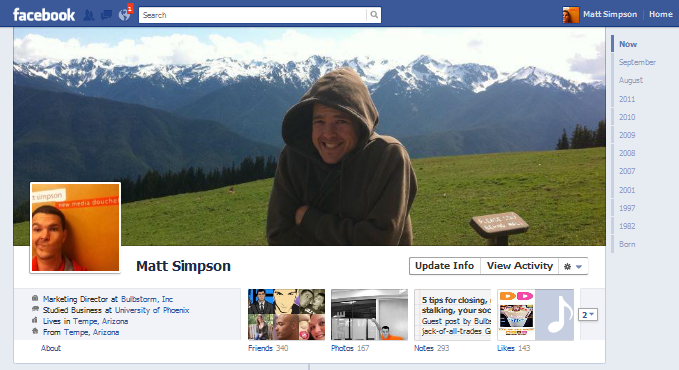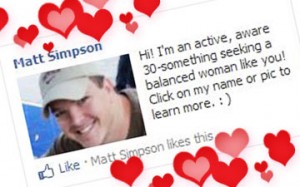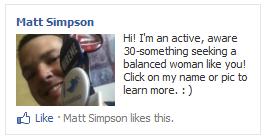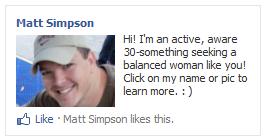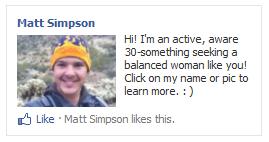I was recently interviewed by MarketingSherpa director of editorial content Daniel Burstein. The interview was in support of our whitepaper 10 Facebook Promotion Myths.
Daniel Burstein: In reading Facebook’s guidelines, sweepstakes and contests seem like the biggest way to run afoul of Facebook, since there are some pretty strict limits. However, I see marketers violating these guidelines every day. How strict is Facebook at monitoring and punishing violators?
Matt Simpson: There are multiple examples of pages being shut down for violating the promotion guidelines. Scandinavian Airlines is a good one. Our Facebook rep says, “We have people constantly monitoring the site for promotion violations (…). If someone is caught, the page is taken down, and they are asked to reach out before we can re-enable to ensure they are clear on the issue.”
Obviously, it’d be impossible for Facebook to police every page. I tell social media marketers that shutdown is a risk, not a certainty. How open are you to losing your investment in the campaign? How open are you to seeing your page shut down? How open are you to telling fans that the rules of the contest or sweepstakes they entered just changed?
Of course, no one watches your page as closely as your boss and your competition. The latter observer has a vested interest in you following Facebook’s promotion guidelines … and in tattling when you don’t.
DB: How do you tell if you’ve been penalized by Facebook? What are the initial steps to getting your account reactivated? Do you lose all data and friends when it is deactivated?
MS: We’ve never seen a page shut down because we follow the rules! That said, I’ve had contacts verify our Facebook rep’s description that “If someone is caught, their page is taken down and they are asked to reach out before we can re-enable to ensure they are clear on the issue.” It’s my understanding that you don’t lose your data or fans. Your page is just invisible until you address the issue and earn reinstatement.
DB: What are three key steps every marketer can take to avoid getting penalized again (or in the first place)?
MS: Here are three questions to ask yourself before launching your promotion:
- Am I seeking virality? If the premise of your promotion is to go viral, it’s a huge red flag. That’s not to say that a creative concept and well-built technology won’t drive organic growth. But don’t expect to spam the news feed and get away with it.
- Am I using Facebook functionality? Be careful here! Do not ask fans to post, like or comment on content on your wall or photo albums. Do not use “like” buttons as a voting mechanism. You must run your promotion through a third-party application.
- Am I collecting contact information? At the end of your campaign, you’ll have to contact your winners to distribute prizes. Remember to collect their contact info in your promotion app, because you cannot contact them through Facebook.
DB: Given the need to follow Facebook’s terms and conditions, what factors should marketers weigh when deciding whether to hold a promotion on Facebook or not. For example, I see many print ads that used to send traffic to a brand website, instead sending traffic to the brand’s Facebook page to enter a sweepstakes or contest. Would they just be better off holding promotions on their own site? In the end, what value does a Facebook fan really have to a marketer?
MS: The concept of collecting fans with an iPad sweepstakes on Facebook is very 2010! It’s a snoozer. Plus, how many of those iPad fans stick around to engage with your brand after the sweepstakes ends?
As marketers, our objective should not be to build a Facebook promotion. It should be to create passionate bonds with consumers by delivering social and interactive engagements. Currently, Facebook offers the best platform for delivering that kind of engagement.
By social, I mean that the engagement should offer frictionless sharing and visibility into how my friends are engaging. By interactive, I mean it should be more than a contact form. For example, I should be able to submit content and browse, vote and comment on others’ content. Ideally, I’d also collect a marketing opt-in such as an email subscription or Facebook like.
Interactivity is easy to deliver on a website. However, no one delivers a personalized social experience like Facebook. Fortunately, the Facebook Graph API enables you to add Facebook-esque social elements to experiences – including contests and sweepstakes – on your website. We often see this referred to as “connecting with Facebook.”
The next frontier is to deliver social and interactive engagements on your Facebook page and on your website simultaneously, with or without Facebook Graph API.
Why force consumers to log in to Facebook.com or connect with Facebook on your website? These steps are barriers to engagement.

